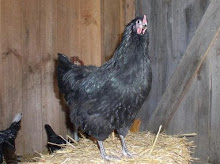In a child's book of fairy tales, there is a story about three little pigs, each building a house out of different materials, one brick, one of sticks, and one built from straw. The hungry, big, bad, wolf seeking a tasty and easy meal, comes first to the straw house, and huffing and puffing, blows the house away.
The little pig, running to escape, is welcomed into the house of sticks built by his brother. The wolf, now anticipating the additional course to his soon to be meal, again and with great huffing and puffing, blows the house of sticks away too. Both little piggies now run to the last house built of brick, where the three little pigs sit comfortably as the wolf huffs and puffs to no avail. I won't have go into the details of the rest of the story but the message is, better to build your house with bricks then with straw.
Recently, I have been asked about the merits of straw bale home construction.
Straw bale construction offers tremendous benefits to any sustainable home renovation or new construction project.
Many of today's sustainable construction techniques are not new. People have been using earth, plant, other local natural resources (dung mixtures for example) or some combination of each, all through history and on every continent.
In fact there are homes in Europe constructed using straw, that are over 200 years old. Straw when covered by plaster or cement has an extremely high resistance to fire, being equal to requirements in hospitals, roughly two hours of (fire/burn) protection before possible ignition.
The threat of fire from electrical wires or sparks is extremely low within the wall of the bale construction. This is because the process of compressing the straw bales during construction literally squeezes the air out of the "compressed" bales eliminating the oxygen necessary for fire propagation.
That compression also aids in the natural insulation characteristics of straw bale construction.
By using straw bale construction, homeowners can receive the benefit of a natural, sustainable material that offers greater insulation ("R" values) then most fiber products.
In the southwest, adobe bricks (mud, straw/plants) have provided a natural way to cool homes during summer months and warm in cold winter nights, centuries before air-conditioning.
Straw construction, interestingly enough, also offers a natural, sustainable, earthquake proof stability not offered by current building materials. To really appreciate the sustainability of mud and straw construction just look to the Spanish Missions running along California's most active fault lines.
Cost should be comparable to standard construction costs, although you will definitely want to contract with someone experienced in using straw bales. Framing is still necessary, and although the straw can be cut for windows, doorways, electrical, and necessary piping, savings are achieved by the elimination of other construction materials such as insulation and sheet rock (dry-wall), brick, siding, and etc.
Using straw bale construction also offers the architect and homeowner the opportunity to integrate curves and waves into any home design. The ability to "shave" the bale expands the creativity and uniqueness of home design and functionality.
Brett
Monday, August 10, 2009
Subscribe to:
Post Comments (Atom)










No comments:
Post a Comment